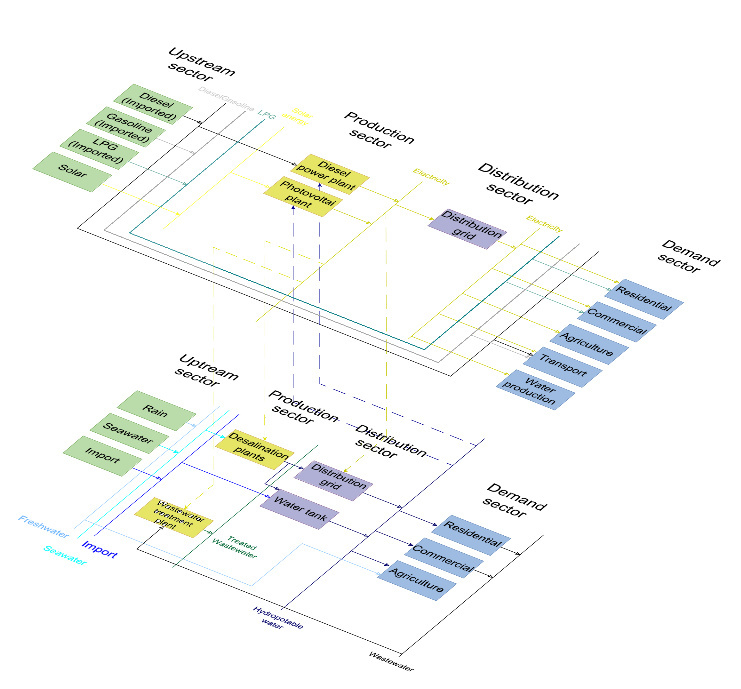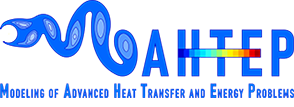Climate-Land-Energy-Water (CLEW) and material-energy nexus
This cluster of activities aim to extend the capabilities of traditional energy system optimization models. In particular, the positive tradeoffs obtained by a unified modelling approach that conveys the climate – land – energy – water dimensions have been scientifically demonstrated. For this reason, our group activities aim at integrating the above – mentioned components in open-source optimization models, as follow.
1. Water dimension
Activity carried out by: Farzaneh Amir Kavei, Maria Elena Alfano
Water and energy are intertwined, an energy system uses water in different phases and forms and the water system cannot be independent from the energy resources. Nonetheless, most of the energy models neglect the presence of the water in their technologies and processes. The goal of this study field of the group is to first implement water as a commodity inside the TEMOA energy models and in a second step find a water modelling tool enable to include and connect water related supply and demand features into the energy system model.
The first concrete step of the water dimension activity involved the execution of TEMOA-Pantelleria [1], an integrated energy-water model developed for the Sicilian Island. The accompanying diagram displays Figure 7, via dual-tiered representation, the corresponding reference energy and water systems alongside their interdependent linkages.

Figure 7. Integrated energy - water system of the Pantelleria Island.
2. Land dimension
Activity carried out by: Daniele Mosso
Characterizing land use in energy systems optimization models is critical to developing sustainable energy policies. This activity develops a coupling framework between TEMOA, a modeling tool for energy systems optimization, and geographic and geospatial data on land use and land energy potential. The goal of this tool is to identify, for a specific region, the most suitable locations for the installation of renewable energy facilities that, integrated into an energy planning tool, provide energy scenarios that best exploit the characteristics of a given region.
3. Material dimension
Activity carried out by: Gianvito Colucci
In collaboration with: Ruhr University Bochum
References
- M. E. Alfano, “Modeling the Energy and the Water Systems in an open-access Energy System Optimization Model: the Pantelleria case study,” Dec. 2022.

